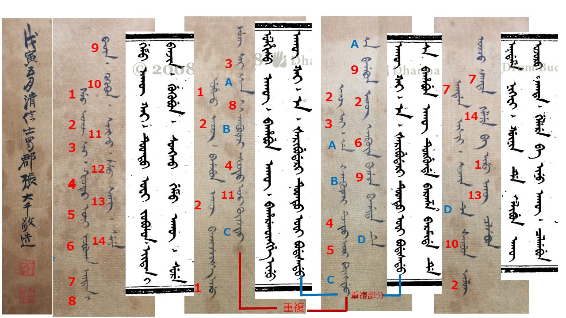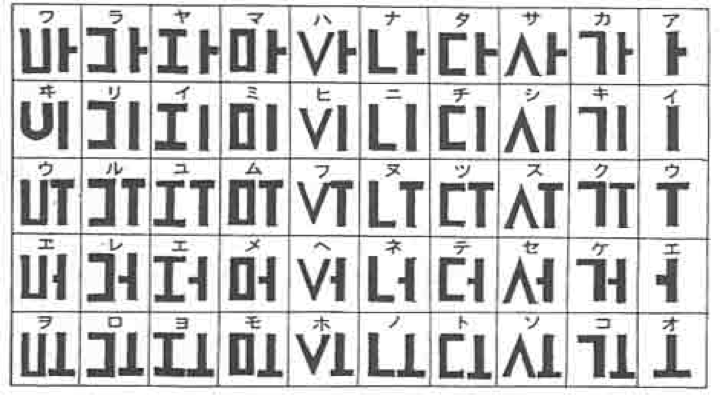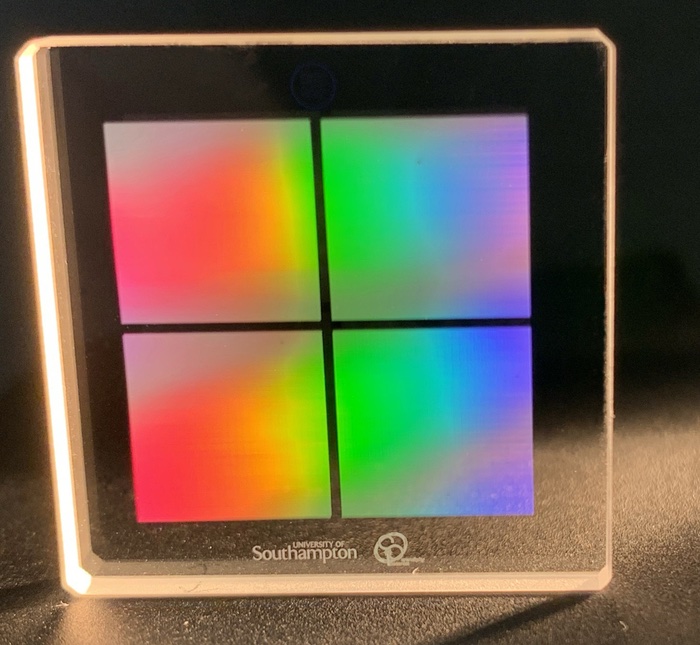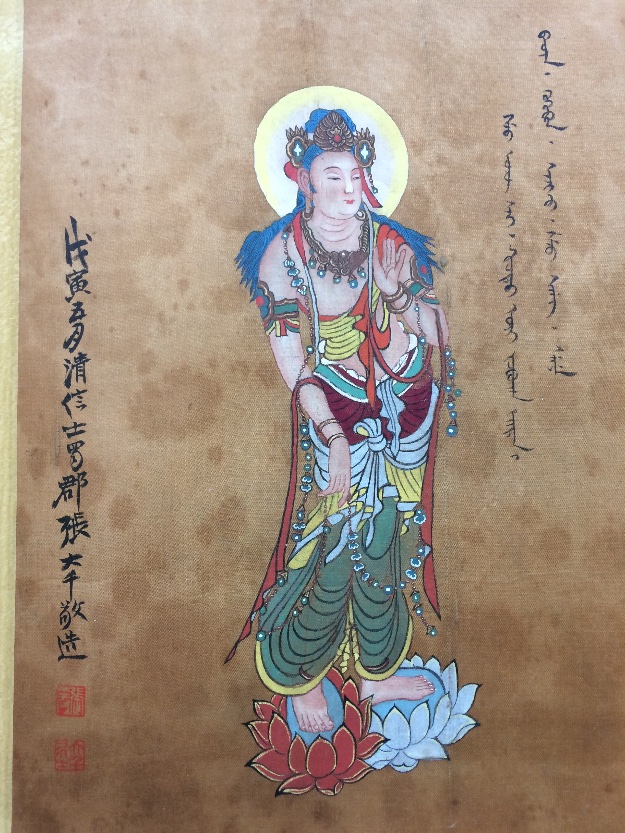Archive for Writing
"They're not learning how to write characters!"
So exclaimed a graduate student from the PRC. She was decrying the new teaching methods for Mandarin courses in the West that do not emphasize copying characters countless times by hand and taking dictation (tīngxiě 聽寫 / 听写) tests, but rather relying on Pinyin (alphabetical) inputting to write the characters via computers.
These are topics we have discussed numerous times on Language Log (see "Selected readings" below for a sample of some of the posts that touch on this subject. I told the student that this is indeed a fact of life, and that current teaching methods for Mandarin emphasize pronunciation, grammar, vocabulary, sentence structure, etc., and that handwriting the characters is no longer a priority. Whereas in the past handwriting of the characters used to take up over half of a student's learning time, now copying characters is reduced to only a small fraction of that.
Read the rest of this entry »
Massive long-term data storage
News release in EurekAlert, Optica (10/28/21):
"High-speed laser writing method could pack 500 terabytes of data into CD-sized glass disc: Advances make high-density, 5D optical storage practical for long-term data archiving"
Caption
Researchers developed a new fast and energy-efficient laser-writing method for producing nanostructures in silica glass. They used the method to record 6 GB data in a one-inch silica glass sample. The four squares pictured each measure just 8.8 X 8.8 mm. They also used the laser-writing method to write the university logo and mark on the glass.
Credit
Yuhao Lei and Peter G. Kazansky, University of Southampton
Read the rest of this entry »
Decolonizing Chinese fonts by probing the past
New article by Brian Ng in Rest of World (9/6/21):
"Revolutionary type: Meet the designer decolonizing Chinese fonts
Julius Hui, who has done custom work for companies like Tencent, wants to radically rethink Chinese fonts."
I find this article to be curiously counterintuitive: Julius Hui, the font designer, wants to revolutionize Chinese typography by hearkening back to a time before modern (say, the last four or five hundred years) fonts for typesetting. That would be like telling designers of modern fonts for northern European languages to go back to the 4th-century pre-Gothic script of Ulfilas (or Wulfila) to develop a "revolutionary" new script for English or for designers of modern fonts for southern European languages to go back to the uncial majuscule script of roughly the same time period that was used for Greek and Latin.
Read the rest of this entry »
Vulgar village vernacular
This Chinese article is about a man who has made a living by painting slogans and ads on village walls for thirty years. Some of the slogans are rather bizarre, as may be seen by looking at the many photographs in the article.
The article says it is such a well-paying job that the man was able to buy 6 apartments in his hometown with his earnings. Painting on walls is one of the major ways to advertise or propagate goods and ideas in the countryside.
There are many examples of such signs in the article, but I couldn't understand all of them upon first glance, so I wondered if the country folk would be able to read the signs. I asked a number of my graduate students from China, and they all said, yes, the country folk not only would be able to read them, but would enjoy them and would be motivated to buy the products and services promoted by the signs.
Read the rest of this entry »
Faux Manchu: Ornamental Manchu II
[This is a guest post by Jichang Lulu]
In “Ornamental Manchu: the lengths to which a forger will go” (LL, April 24), Professor Mair discussed a handscroll with faux-Manchu inscriptions. Although the writing clearly imitated Manchu, the imitation was so liberal and the forger so unfamiliar with the Manchu script that hardly any word was intelligible even to eminent Manjurists consulted for the post.
As a non-Manjurist, I found the text only more puzzling, but was able to identify its model by comparing a a conjectural reading of a non-recurring word in it to a published text of a Manchu translation of the Heart Sutra (Fuchs, Die mandjurischen Druckausgaben des Hsin-ching (Hṛdayasūtra) (non legi), transcribed in Hurvitz, “Two polyglot recensions of the Heart Scripture”, J Indian Philos 3:1/2 (1975)). That guess I shared in a comment embedded in the post, elaborated under it with the likely source text. That presumably settled the question, but, with the source given in transliteration only, didn’t make it any easier to appreciate the hilarious cavalierness of the copy without an ability to mentally untransliterate it back into the Manchu script.
Professor Kicengge has now compared the text to a Manchu-script rendition of the sutra and composed an image that juxtaposes the copy to its model. The juxtaposition verifies the identification of the source text: not only does the text (very roughly) match, so does its division into columns.

The handscroll’s faux Manchu and its model, juxtaposed. Supplied by Kicengge.
Read the rest of this entry »
Character confusion: three-child policy
生育还是生肓? pic.twitter.com/GBPx07QSaT
— Chenyu_Liang (@chenyuliang) May 31, 2021
Read the rest of this entry »
Writing from the Age of the Gods
[This is a guest post by Bob Ramsey]

Writing from the Age of the Gods (Jindai moji)
Read the rest of this entry »
Ornamental Manchu: the lengths to which a forger will go
An anonymous collector recently sent me photographs of a handscroll featuring eight manifestations of Guanyin (Skt. Avalokiteśvara), the Bodhisattva of Compassion painted on silk, circa 1940s. A striking feature of this handscroll is that each painting of one of the manifestations is accompanied by a vertical Manchu inscription on the upper right side. The Manchu writing looks genuine, but it has some characteristics that give one pause. The paintings also have some aspects that are disquieting. In this post, l will reproduce only the first and last paintings, but will also provide some other illustrations for comparative purposes.
Read the rest of this entry »
"Configurations of the earth" and "patterns of the heavens" in Sinitic toponymy
The latest issue of Sino-Platonic Papers:
James M. Hargett, "Anchors of Stability: Place-Names in Early China", Sino-Platonic Papers, 312 (April, 2021), 1-41. (free pdf)
ABSTRACT:
The use of place-names in China predates its written history, which extends back at least 3,500 years. While the basic principles of toponym formation in ancient China are similar to those in other cultures around the world, early in its history a process took place that led to a standardization of the practices by which place-names were formulated. The central argument in this essay is that the essential features of place-name nomenclature in China were already in place before the Qin unification in 221 BCE.
Read the rest of this entry »
Orthographic variation in a pair of poems by a Japanese Zen monk and his mistress
From Bryan Van Norden:
I found interesting these paired poems by the 15th-century Japanese Zen monk Ikkyū (1394-1481) and by his mistress, the blind singer Mori. He writes his poem in Classical Chinese, because he is a man, but her poem is in hiragana, because she is a woman. Below are photos of the original scroll, showing paintings of Ikkyū and Mori, from Arntzen's translation, and a more recent translation by Messer and Smith. I am researching Ikkyū for what will ultimately be a five-minute segment in my class lecture on Zen this week. I find that students have trouble appreciating what is at stake in the debate over metaphysical monism vs dualism. Ikkyū, a monk who frequented bars and brothels, shows one way of rejecting dualisms (like sacred vs profane, mind vs. body, monk vs. layperson).
Read the rest of this entry »
Myopia in the Middle Kingdom
Latest chapter of the perpetual litany against the epidemic of nearsightedness in the homeland of sinograms:
"China rolls out mandatory national standards to prevent myopia among students", Zhang Jinruo, People's Daily (3/16/21)
The abnormally high incidence of myopia among Chinese children has been noted and bemoaned for decades. Governments have repeatedly declared war on nearsightedness. Here's today's installment:
A set of mandatory national standards on juvenile myopia prevention was put into practice in China since March 1, requiring all school supplies to meet myopia prevention criterions, from paper materials such as text books, to classroom lighting and multimedia teaching systems.
Read the rest of this entry »



